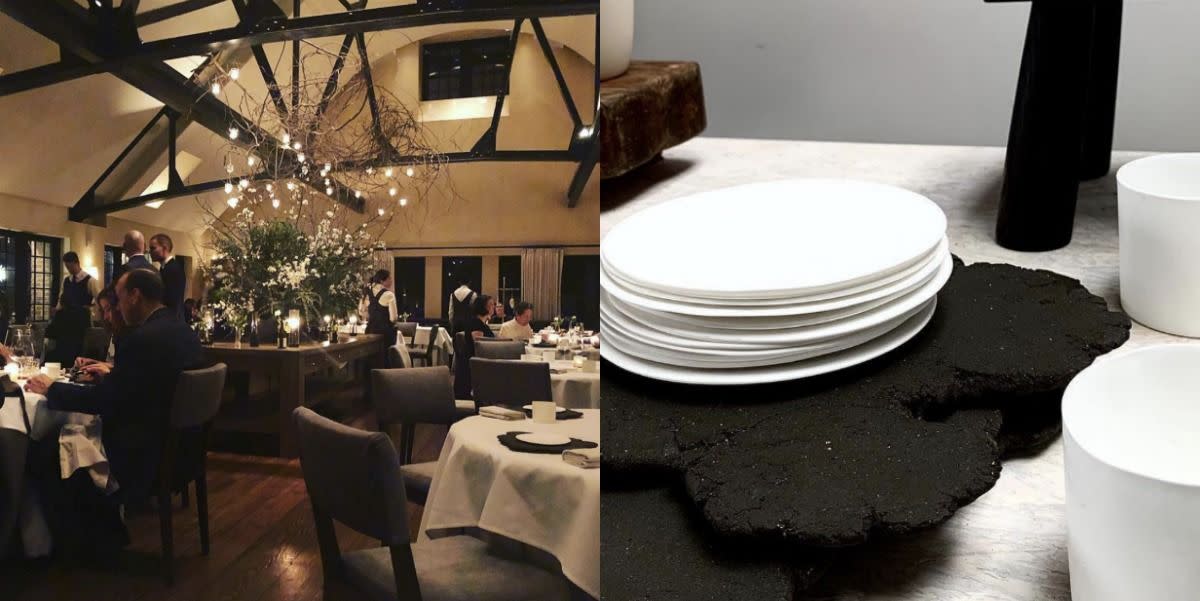The Plates at This Restaurant Are Made from the Bones of the Cows Used for Steak

Dine at farm-to-table eatery Blue Hill at Stone Barns, located in Pocantico Hills, NY, and you'll be sure to marvel at the tableware. The plates, bowls, and water cups boast the purest white, but look so slender, almost thin as paper, at first glance. Pick up a piece and you'll be shocked how durable these bad boys are. It's not ceramic, or porcelain, though. The tableware is made from cow bones—from the very cattle that supply the menu.
To give a little background, let's talk about the restaurant itself. Blue Hill at Stone Barns follows a whole-animal philosophy, meaning that it tries to use as much of the animal as possible when preparing its menu. Chef and co-owner of the eatery, Dan Barber, was approached by designer Gregg Moore back in 2015. Barber tells the New York Times that Moore politely asked him "If you’re thinking about food and the way it’s grown and raised and everything that goes into the creation of a plate, why are you not thinking about the plate itself?" And that's how the idea came about: Barber would continue to raise his cows, slaughter them for meat, and toss the unused bones to Moore to create tableware.
A post shared by Gregg Moore (@greggfmoore) on Dec 14, 2019 at 11:13am PST
But turning these bones into functional tableware was no easy task. Moore used a rigorous multi-step process dating back to the mid-18th century (yes, that's where the term "bone china" comes from) to fashion this unique collection for Blue Hill. First he boiled the bones until the living tissue turned into calcium phosphate. Next, he added water to form a sludge, allowed it time to dry, and then pulverized it into powder. Once again, he added water, then threw kaolin and Cornish stone into the mix to create a substance that was finally moldable. Once the pieces were shaped, they were flash-fired in an oxidized electric kiln at about 2,400 degrees Fahrenheit. While the plates and bowls would typically keep their form, the cups tend to warp from the heat, which explains their distorted, organic-looking variations.
A post shared by L’Âme du Bois 森林浴 (@scentsofwood) on Dec 29, 2019 at 6:58pm PST
“What differentiates bone china from all other ceramic materials is that it’s made out of an element that was once living. So it has the ability to express, if we look carefully enough, the quality of life of that living entity.” Moore says. The restaurant receives most of its beef and dairy from its farm in Massachusetts, where the cows are grass-fed and free-range. And now, thanks to Moore, their upbringing is remembered in the tableware. It's upcycling at its finest!
Follow House Beautiful on Instagram.
You Might Also Like

